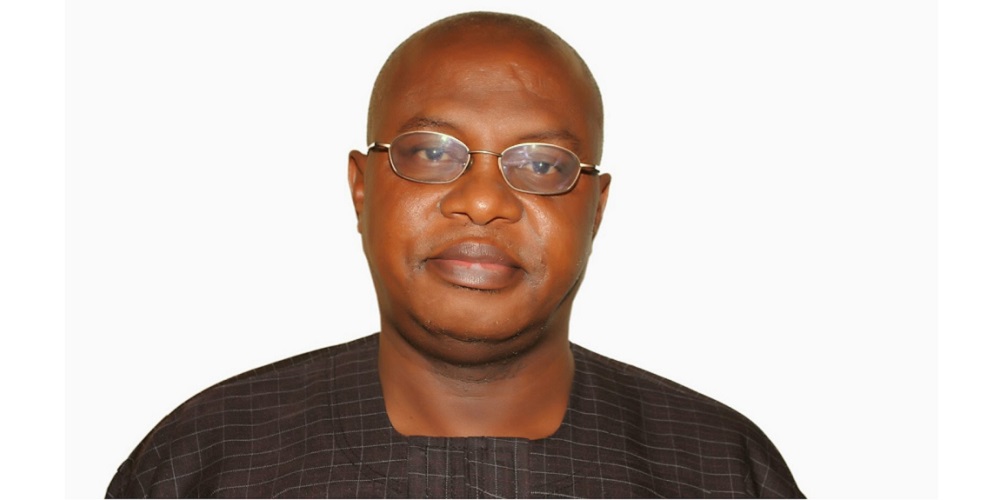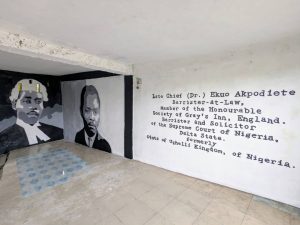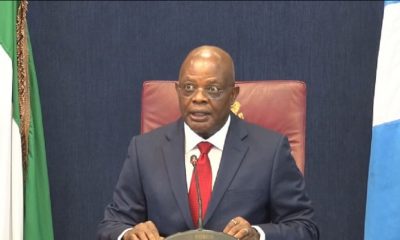Opinion
Internet connectivity and lessons from the undersea cable cuts

By Sonny Aragba-Akpore
When a fall back option becomes an option, there are issues to contend with.
Nigerian Communications Satellite(NIGCOMSAT 1) was launched on May 13,2007 and deorbited on November 11,2008 as a result of Solar array power failure and confined to the graveyard.
The consequences of the failure resulted in many companies which derived their services from it suffered setbacks.
Some banks that had the misfortune of taking their decisions to connect to NIGCOMSAT became laughing stocks by their contemporary banks who were believed to be wiser to ignore the marketing powers of Timasaniyu Ahmed Rufai and his team.
The failure of NiGCOMSAT was seen as a result of the “Nigerian factor” especially when the pioneer communications satellite in Africa had no backup and seen as one risk too many.
That was its only sin because across the globe satellites fail sometimes on the launch day in the process of launching.
Satellites launches are generally laced with anxieties because anything could happen in a split of seconds.
But NIGCOMSAT 1 was in the orbit for 18 months before it had its challenges.
While many organizations licked their wounds and scampered for alternatives, Nigerian government began new moves to relaunch another satellite.
At the beginning of the deal with China Great Wall Industry Corporation (CGWIC),part of the agreement was that China through the China Exim Bank was going to fund the project and to be managed by the Chinese at the ground station in Xichang for two years before handing over to Nigeria.
Its ownership by Nigeria was strictly through counterpart funding for which Nigeria contributed $50m at that time, CGWIC paid $200m.
After all the bashings on the Nigerian Communications Satellite Limited and its management, a new satellite, NIGCOMSAT 1R was launched on December 19,2011.
But the excitement was no longer there and as the satellite with its 15-year lifespan begins its last journey, its owners and management have very little to celebrate.
And the crisis of the undersea cable cuts on Thursday March 14,2024 opened a new reality in internet connectivity and reopened the NIGCOMSAT story. The cuts took place around Cote D Ivoire and Senegalese axis.
Those millions of organizations who relied heavily on this almost foolproof technology of connectivity were jolted by the cuts as they experienced downtime that affected their businesses.
Banks and other corporate organizations that believed in the services from these undersea cables in Africa and especially in West Africa had their plans scuttled as they began to review all the options available for seamless communication access to run their networks of branches that depended solely on the undersea cables.
The danger of the cut was that the banks especially had no alternatives as the undersea cables had no back ups.
Telecommunications companies were also badly hit as they depended on the undersea cables to run their services including terrestrial and mobile phone communications.
Skeletal services for voice connections were available since the Mobile Switching Centres (MSCs) and base stations were still up.
Internet connectivity for corporate organizations and individuals were however badly disrupted and as the companies battle to redress the situation, full service restoration which were anticipated to take a while were said to have been restored as at Monday March 18,2024.
There are therefore lessons to be learnt.
Are undersea cables the answer to seamless communications or can we in all honesty completely disregard communication satellites simply because of the failure of one satellite and conclude that satellite is not it?
In the light of the crisis from the cable cuts it is fair to conclude that satellite communications is as good as undersea cables connectivity.
The only problem with NIGCOMSAT was that it had no back up.
It stands to reason that Undersea cables connectivity could be likened to one-way traffic. If they fail that is it as there are no backups too and downtime is severe and may last for days if not weeks.
But we must admit that Undersea cables are critical infrastructure for internet connectivity, carrying vast amounts of data traffic across continents. However, they are susceptible to damage, including accidental cuts, natural disasters, or technical malfunctions.
Disruptions to these cables can significantly impact businesses, government operations, and individual users.
This is not the first time a subsea cable will get damaged in the region. In 2023 alone ,two submarine cable systems, which also service the Nigerian market, suffered damage off the coast of West Africa.
According to agency reports, the West African Cable System (WACS) and the South Atlantic 3 (SAT-3) undersea cables suffered breaks between the Democratic Republic of Congo and Cameroon due to two separate rock falls in the Congo Canyon.
In 2020, WACS suffered cuts, slowing down Internet services in the country.
On its X handle, MTN Nigeria, one of the affected providers, apologised to its subscribers. “Our engineers are working to resolve these challenges as soon as possible…”
Recently, multiple fibre cuts shut out MTN Nigeria subscribers from making calls and browsing the Internet for several hours.
An official at MTN Nigeria, said, “Our customers have been experiencing challenges connecting to the network due to a major service outage caused by multiple fibre cuts, affecting voice and data services.”
Mainone ,an infrastructure company said in a statement on its website that it became necessary to declare a force majeure subsequent to testing of its cable system.
It said that data from the preliminary assessment of the cable system indicated some underwater activity was the likely cause of disruptions to the system.
It said that commercial contracts typically included such a force majeure clause which enabled service providers to suspend contractual obligations for the duration of such disruptions.
A force majeure is an unforeseeable circumstance that prevents someone from fulfilling a contract.
The unforeseen circumstances maybe natural disasters (fire, storms, floods), or governmental or societal actions (war, invasion, civil unrest, labour strikes), or infrastructure failures (transportation, energy).
“Live network data show a major disruption to Internet connectivity in and around West and Central Africa,” Internet monitoring firm NetBlocks said .
MyBroadband reports the downtime was caused by multiple outages on undersea cables near Abidjan in Côte d’Ivoire.
The SAT-3/West Africa Cable System (WACS), the Africa Coast to Europe (ACE), and other cables were affected. The outage started around 12:30 on Thursday, March 14,2024.
“Multiple undersea cable failures between South Africa and Europe currently impacting South Africa’s network providers, including Vodacom,” a Vodacom spokesperson explained in a statement.
Doug Madory, director of Internet analysis at Kentik, indicated there were also issues with the MainOne subsea cable.
Microsoft is reporting network latency issues in its South Africa North and South Africa West locations.
“Starting at 10:30 UTC on Mar 14,2024, customers using Azure Services in South Africa North and South Africa West experienced increased network latency or packet drops when accessing their resources,” the company said.
“We have determined that multiple fiber cables on the West Coast of Africa — WACS, MainOne, SAT3, ACE — have been impacted which reduced total capacity supporting our Regions in South Africa,” Microsoft said in an update. “In addition to these cable impacts, the on-going cable cuts in the Red Sea — EIG, Seacom, AAE-1 — are also impacting capacity on the East Coast of Africa. This combination of incidents has impacted all Africa capacity – including other Cloud providers and public Internet as well.”
Interestingly, this is not the first time damage to undersea cables have caused internet disruptions, in 2020, MTN blamed undersea cables for Internet disruptions in West Africa.
In 2018, 10 West African countries were completely offline for 48 hours, due to damages to the African Coast to Europe (ACE) submarine cable.
MainOne’s 14,000 km submarine cable system also disrupted the Internet in 2017 across West Africa. This time, however, Internet troubles seem to go beyond Africa to some European countries, which could mean a more severe problem this time.
Telecommunications companies and banks in Nigeria were on that Thursday March 14,2024 hit by an internet outage as a result of damage to international undersea cables supplying them connectivity.
Industry regulator, Nigerian Communication Commission (NCC), explained that the damage affected major undersea cables near Abidjan in Côte d’Ivoire causing downtime across West and South African countries.
Sensing the danger of not having a backup option, many organizations have had to take the satellite Communications routes .
Strong satellite companies offering services include SES S.A. established in 1985 and located in Betzdorf, Luxembourg.
Viasst Inc another company was established in 1986 and with headquarters in California, United States.
There are also Intelsat established in 1964 and believed to be the largest and located in Virginia, United States.
Tele sat based in Canada was established 1969.
There are also General Dynamics (1952)
in New York, United States and Gilat satellite network ,Echostar ,Inmarsat and Eutelsat among others.
Opinion
5G,IoT and AI to boost global GDP by 2030

By Sonny Aragba-Akpore
With Mobile technologies and services now generating around 5.8% of global Gross Domestic Product (GDP) a contribution that amounts to about $6.5 trillion of economic value, there are strong projections that by 2030, this figure will rise to almost $11 trillion, or 8.4% of GDP.
Global System of Mobile Communications Association (GSMA) says much of this will be driven by countries around the world increasingly benefiting from the improvements in productivity and efficiency brought about by the increased take-up of mobile services and digital technologies, including 5G, Internet of Things (IoT) and Artificial Intelligence (AI).
The GSMA recently introduced the 5G Connectivity Index to provide insights into 5G performance in 39 markets in order to encourage informed decision-making.
In terms of Economic Impact,
the GSMA emphasizes the economic benefits of mobile technologies and services, including 5G, projecting that they will contribute significantly to GDP growth by 2030.
“The GSMA provides specific reports and analyses on 5G in different regions, such as Sub-Saharan Africa, Asia ,Middle East among others highlighting the progress and challenges of 5G deployment in specific areas.”
In Sub Saharan Africa for instance with particular attention on Nigeria,South Africa,Egypt,Kenya and Botswana among others some measure of progress in deployment has been recorded.
The rollout of 5G has brought immense benefits across multiple industry sectors, particularly those involving internet of things (IoT) and artificial intelligence (AI) applications in which the real-time transfer of data is crucial.
More broadly, the adoption of 5G is expected to accompany increased data use across the globe, with forecasts anticipating mobile data traffic of over 300 exabytes per month by 2030, more than twice the volume consumed in 2024 according to Statista.
And with a third of global population expected to be covered by this fifth generation (5G) networks ,a technology that has defined new ways of communication by 2025 ,GSMA
says the technology has surpassed growth projections of all times.
“5G subscriptions increased by 163 million during the third quarter 2024 to total 2.1 billion. 5G subscriptions reached close to 2.3 billion by the end of 2024 accounting for more than 25 percent of all global mobile subscriptions.
“4G subscriptions continue to decline as subscribers migrate to 5G” according to GSMA.
As of the first quarter of 2024, there were nearly two billion 5G connections worldwide, with 185 million new additions. This is expected to grow to 7.7 billion by 2028.”
Statistics show that 5G is the fastest-growing mobile broadband technology, reaching 1.5 billion connections by the end of 2023.
It only took four years to reach this number, compared to 10 years for 3G and more than five years for 4G.
“5G is more than a new generation of technologies; it denotes a new era in which connectivity will become increasingly fluid and flexible.5G Networks will adapt to applications and performance will be tailored precisely to the needs of the user” GSMA submits.
By covering one-third of the world’s population , impact on the mobile industry and its customers will be profound according to GSMA.
To deepen the spread of 5G ,GSMA is working closely with the mobile operators pioneering 5G, “by engaging with governments, vertical industries including automotive, financial services, healthcare providers, transport operators, utilities and other industry sectors to develop business cases for 5G.”
And In order to accelerate the growth and spread, many operators are said to be deploying
AI technology as part of an integral part of telecoms operators’ strategic and operational plans.
“Operators are making important advancements in the deployment of AI technology, which is serving as a transformative force shaping the telecoms industry. By deploying autonomous AI-based systems, operators can enhance operational efficiency, customer satisfaction and security, while also creating new revenue opportunities”.
China, South Korea, the United Kingdom, Germany, and the United States are the leading countries with robust 5G coverage in the world.
Since the first commercial launches of the fifth generation of mobile networks in late 2018, these five countries have emerged as leaders because multiple companies in these countries have deployed networks and are selling compatible devices. Countries including Switzerland and Finland are up and comers in 5G development, though they have limited deployment.
In China there are three Companies leading in deployment.
The world’s largest 5G network was launched by the three largest Chinese network operators Oct 31, 2019, according to the state-run news agency Xinhua. These are China Mobile, China Unicom, and China Telecom which all activated their networks in less than five months after they were issued 5G licenses.
Each of the network operators offered their 5G services at $18 per month in 50 Chinese cities at the beginning of the launch.
GSMA expects 36% of China’s mobile users to be using 5G by 2025. That’s about 600 million subscribers, who would also make up 40% of the entire global 5G market by this year.
This is all despite efforts made by the United States government to hamper the progress of Chinese vendors, though those efforts may affect how Chinese companies may expand into the global market.
In South Korea,SK Telecom and Korea Telecom run as the main competitors for the South Korean 5G market.
SK Telecom acquired spectrum in the 3.5 GHz and 28 GHz frequencies to prepare for deploying 5G.
In April of 2019, the Enterprise claimed to be the first mobile carrier in the world to launch 5G services to work on 5G smartphones. SK Telecom asserted an edge over rival Verizon, as the former launched 5G services available at the same time as Samsung Galaxy S10 5G smartphone launched in South Korea. Verizon launched mobile 5G services in the U.S. before a 5G enabled smartphone was available to U.S. consumers.
SK Telecom also conducted tests with a 5G Standalone (SA) Core (a core not reliant on the 4G network) for their 5G network in cooperation with Samsung Electronics.
The world’s largest 5G network was launched by the three largest Chinese network operators Oct 31, 2019, according to the state-run news agency Xinhua. These are China Mobile, China Unicom, and China Telecom which all activated their networks in less than five months after they were issued 5G licenses. Each of the network operators offered their 5G services at $18 per month in 50 Chinese cities at the beginning of the launch.
“What we are seeing is a concerted effort by the Chinese — the operators, vendors, and government regulators — to deploy 5G as quickly as possible,” Chris Nicoll, principal analyst at ACG Research, pointed this out in a November 1, 2019 SDxCentral article.
With all of these players working together, the three network operators had collectively deployed nearly 86,000 5G base stations peaked over 130,000 by the end of 2019. The latter number breaks down into China Unicom and China telecom, with each planning to install 40,000 base stations, and the market leader China Mobile to install 50,000.This was the projection by 2019 but they have since overshot this by the beginning of 2024.
The International Telecommunication Union (ITU), says 5G coverage reached 40% of the world’s population in 2023 with an uneven coverage and distribution with developed countries having more coverage than low-income countries:
In Europe ,68% of the population is covered and
Americas had 59% of the population covered while
Asia-Pacific has 42% of the population covered as at 2023.
Arab States have 12% of the population covered.
Commonwealth Independent of States (CIS) had 8% of the population covered.
ITU figures show Africa,s coverage rose to 10 % of the population by 2023 .
The ITU also notes that 90% of the world’s population is covered by 4G, but 55% of people without access to 4G live in low-income countries because In low-income countries, 3G is often the only technology available to connect to the Internet.
The ITU develops and adopts international regulations and global standards to enable the harmonization and implementation of broadband mobile networks.
In Africa, around a dozen nations have launched services including Botswana, Kenya, Mauritius, Madagascar, Nigeria, Seychelles, South Africa, Tanzania, Togo, Zimbabwe, and Zambia but Africa is a patchwork of 54 countries.
And penetration is predicted to be slow.
By 2027, Ericsson predicts that 80 percent of phone users in Europe will have 5G service.
At the same time, 5G subscriptions in Africa, home to 1.4 billion people, May stagnate at a little over 10 percent. Why will so few people in Africa get access to 5G services?
China, South Korea, the United Kingdom, Germany, and the United States remain the leading countries with robust 5G coverage in the world.
While many countries are already providing robust services,Africa remains on the outskirts of 5G services.
The countries in Africa that have launched 5G networks, include South Africa with its roll out
In March 2022, when the Independent Communications Authority of South Africa (ICASA) sold spectrum across several bands.
In Nigeria,MTN rolled out commercial 5G services in Lagos in 2022, with other roll out in Abuja, Port Harcourt, Ibadan, Kano, Owerri, and Maiduguri among others.
MTN Congo announced that it was the first country in Central Africa to deploy 5G.
In Botswana Orange deployed 5G technology to provide new services in the Gaborone and Francistown regions.
Other countries in Africa that have launched 5G Fixed Wireless Access (FWA) services include: Angola, Kenya, Zambia, and Zimbabwe.
Analysts say “5G’s potential is growing due to its ability to deliver fiber-like speeds. However, there are still challenges in the region, such as:
Urban areas are reaching their maximum capacity whereas a large portion of the population lives in rural areas.
This explains why 5G adoption in the sub-Saharan region is currently below six percent “
Analysts report that 5G deployment in Africa faces many challenges, including Spectrum assignment,regulatory issues,infrastructure,security,financial resources among others.
“Spectrum is a limited resource that is already in use by other services, such as TV broadcasters and satellite operators. Governments need to open up frequencies and grant 5G licenses at reasonable prices. “
Infrastructure is another major challenge.
“5G networks require a large initial investment, including expensive devices, antennas, and Radio Access Network (RAN) hardware. The infrastructure needs to be fiberized to support 5G services.
Regulatory conditions also serve as challenges to deployment.
For instance “regulatory authorities may not have started the process for licensing and granting frequencies in the right portion “
“Most of the equipment and devices required for 5G deployment need to be imported.”
There are also security challenges that make
5G technology vulnerable to cyber security threats, such as tracking calls and exposing user locations.
Opinion
Right of Reply: THE PUNCH AND BUSYBODY BUSINESS

The recent declaration of a State of Emergency in Rivers State has triggered diverse commentaries from a wide range of Nigerians.
Almost everyone hailed the presidential proclamation because of the visible threat to law and order in the state at the time the action was taken. Of course, there were a few naysayers who read political meanings into an otherwise sincere and prompt intervention.
One such negative interpretation is the position taken by the Editorial Board of The Punch newspaper. In one of its editorials published on the matter, the national daily claimed that the entire crisis was caused by what it described as “the needless meddlesomeness in the governance of the state by its former governor and Tinubu’s Federal Capital Territory Minister, Nyesom Wike….” It is unfortunate that this narrative and others like it have become commonplace in the media space.
How did the Editorial Board of a reputable newspaper arrive at such a conclusion? Their claim that the Sole Administrator, Admiral Ibok Ete Ibas (rtd), has been acting a script purportedly written by the Minister of the Federal Capital Territory, Nyesom Wike, is also faulty and has no iota of truth.
They also faulted the sacking of all political appointees who served in Governor Siminalayi Fubara’s administration, insinuating that their replacements were drawn from Wike’s political camp. Again, nothing can be further from the truth.
Since his appointment as the Sole Administrator of Rivers State, Admiral Ibok Ete Ibas has been running the state with the abundant human resources available in the state and has not imported anybody from outside the state. Did the Editors of The Punch really expect him to run the administration with the politicians loyal to the suspended governor?
Do they not know that the crop of political appointees who served Fubara would have found it difficult to work with the Sole Administrator?
Certainly, they know the truth, but they have chosen to stoke the fire to generate more tensions in Rivers State.
Certain interests might have commissioned this editorial to cast aspersions on the Sole Administrator and raise doubts about his capacity to run the state.
It may also have been the handiwork of Wike’s political detractors, the man whom many politicians love to hate for no other reason than envy and jealousy.
We urge the Punch newspapers to seek a better mode of intervention in the political situation and not dwell on innuendos and unsubstantiated allegations against certain political actors in order to blackmail them.
Dr Ike Odogwu
Opinion
“Chief. Dr. Ekuogbe Akpodiete; A Philanthropist, Lawyer, and Statesman”


In a life of achievement, Chief Ekuogbe Akpodiete popularly called the Duke by his contemporaries in the UK was an assessment clerk, post office clerk, a court interpreter, an educationist, a business man, a political party chieftain, a Barrister and Solicitor, a Magistrate, the Otota (the Prime Minister) of Ughelli kingdom which is the highest traditional chieftaincy office that underpin the royal office of the Ovie of Ughelli Kingdom.
He was a trail blazer, a strict disciplinarian, a lover of people, and a philantropist. He saw to it that people lived in peace and happiness.
Born on the 4th of April, 1924, to parents cut from an industrious mould, Chief Ekuogbe Rowland Gregory Akpodiete took zealously to education that neither his mother Ughweriaka who was a trader, nor his father Akpodiete who was a farmer had.
He attended the Native Authority Primary School, Ughelli, and Enitona High School, Port Harcourt, for his secondary school education.
He thereafter had a brief teaching career in primary schools in Ofuoma near Ughelli, he worked as a process clerk in the then Sapele Township Department between 1950 and 1953, serving at the same time as an interpreter in the local courts.
He proceeded to the United Kingdom to seek the proverbial Golden Fleece where he worked and paid his way through, studying Law. He was admitted into the Honourable society of Gray’s Inn, England, in 1965, and shortly after, he returned home to Nigeria and attended the Nigerian Law School. He was called to the Nigerian Bar in 1966. He immediately started practice in Lagos. However, his practice in Lagos was regrettably abridged by the Nigerian Civil War, which drove him to his hometown Ughelli in 1967, where he continued to practise among his kith and kin as the first Legal Practitioner.
Chief Ekuogbe Akpodiete established himself in Ughelli. After the civil war, he served in the now defunct Mid-western State Judiciary from 1972 to 1975 as a Magistrate.
He was conferred with the chieftaincy title of Urhukperovie of Ughelli kingdom (the light of the King) by the then reigning Ovie of Ughelli, His Royal Highness Oharisi II of blessed memory in 1977.
In the quest for more knowledge, he went back to England for his Master’s degree in law (LL.M) and later a Ph.D. at the University of Warwick.
He was awarded an honourary doctorate degree (Ph.D) by Tenesse Christian University from the United States of America in 1991.
He became the Otota (the Prime Minister) of Ughelli Kingdom in 1986, an office he occupied until his demise on 9th April 1995.
Chief Ekuogbe Akpodiete was also politically involved. In the heady days of the Awolowo-led Unity Party of Nigeria, he was the party’s legal adviser in Ughelli and was on hand to assist during Chief Obafemi Awolowo’s campaign hosting in Ughelli and its environs.
In view of his love for people and entertainment, he established a popular cinema house, one of the first in Ughelli, known as REGA cinema, coined from his names, alongside an entertainment place called Unutakunu (people talk to people).
Chief Ekuogbe Akpodiete was blessed with wives and many children, grandchildren, and great grand children.
Mr. Olotu Akpodiete, PhD
Executive Director
Olotu & Ekuogbe Rowland Akpodiete foundation
-

 News9 hours ago
News9 hours agoBREAKING: Unknown gunmen reportedly storm Senator Natasha’s family residence
-

 News12 hours ago
News12 hours agoSnub story on removal of Rivers Sole Administrator, it’s FAKE-Chief Registrar
-

 News18 hours ago
News18 hours ago“How my father escaped assassination” – Bishop Oyedepo’s daughter
-

 News18 hours ago
News18 hours agoFG expresses sympathy for CBEX victims, urges a united effort to combat Ponzi schemes
-

 News11 hours ago
News11 hours agoSAD! Again, Alleged Herdsmen Attack Three Benue Communities
-

 Politics11 hours ago
Politics11 hours agoPDP govs are jokers, can’t stop coalition train, Atiku boasts
-

 News3 hours ago
News3 hours agoAbuja light rail project must be commissioned on May 29-Wike vows
-

 News9 hours ago
News9 hours agoLawmaker Slams NBA Over Rivers Crisis, Demands Return of N300m





